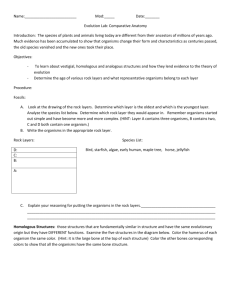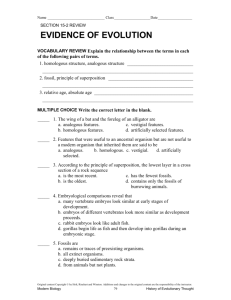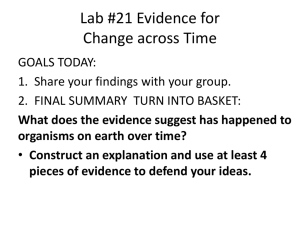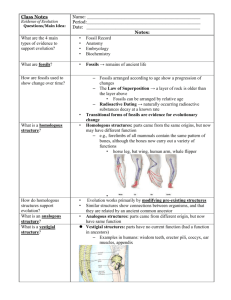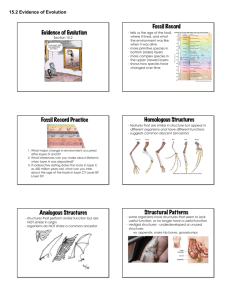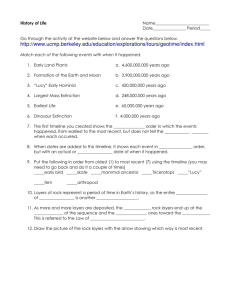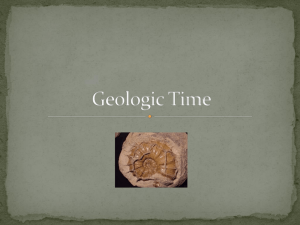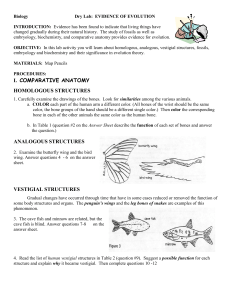Notes: Ch.6-2 Clues About Evolution EQ: Fossils Most of the ______
advertisement
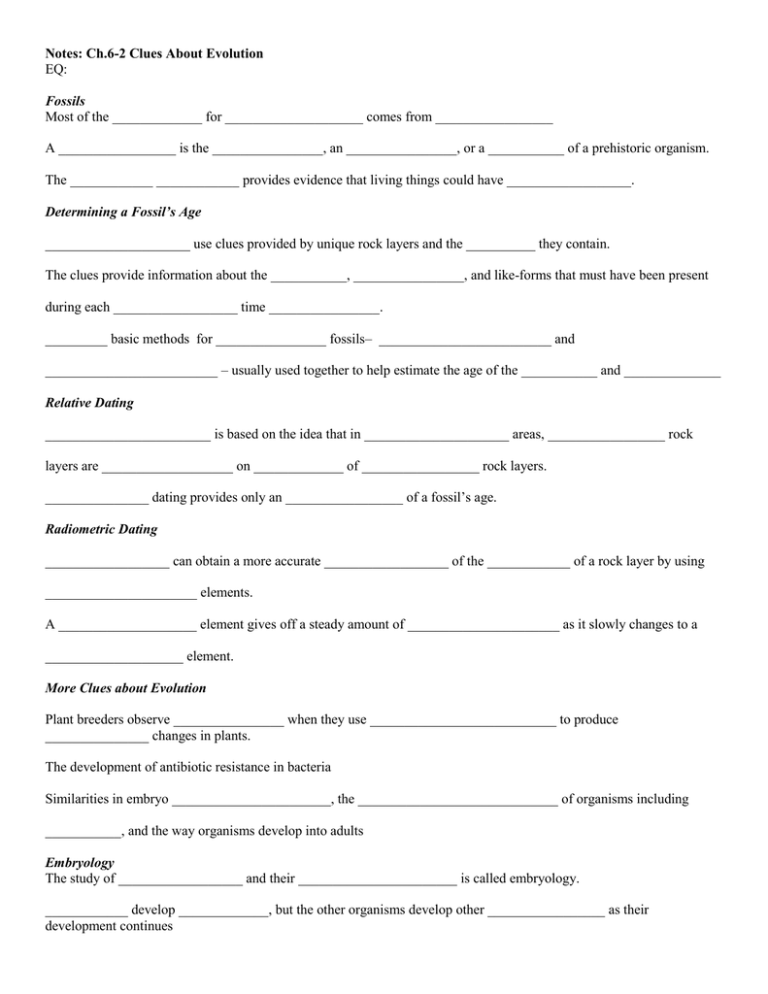
Notes: Ch.6-2 Clues About Evolution EQ: Fossils Most of the _____________ for ____________________ comes from _________________ A _________________ is the ________________, an ________________, or a ___________ of a prehistoric organism. The ____________ ____________ provides evidence that living things could have __________________. Determining a Fossil’s Age _____________________ use clues provided by unique rock layers and the __________ they contain. The clues provide information about the ___________, ________________, and like-forms that must have been present during each __________________ time ________________. _________ basic methods for ________________ fossils– _________________________ and _________________________ – usually used together to help estimate the age of the ___________ and ______________ Relative Dating ________________________ is based on the idea that in _____________________ areas, _________________ rock layers are ___________________ on _____________ of _________________ rock layers. _______________ dating provides only an _________________ of a fossil’s age. Radiometric Dating __________________ can obtain a more accurate __________________ of the ____________ of a rock layer by using ______________________ elements. A ____________________ element gives off a steady amount of ______________________ as it slowly changes to a ____________________ element. More Clues about Evolution Plant breeders observe ________________ when they use ___________________________ to produce _______________ changes in plants. The development of antibiotic resistance in bacteria Similarities in embryo _______________________, the _____________________________ of organisms including ___________, and the way organisms develop into adults Embryology The study of __________________ and their _______________________ is called embryology. ____________ develop _____________, but the other organisms develop other _________________ as their development continues _____________, _________________ and _______________ keep their tails, but many _________________ lose theirs. These ________________________ suggest an evolutionary relationship among all vertebrate species. Homologous Structures _____________ parts that are similar in origin and __________________ are called ___________________________. ___________________ structures also can be similar in function. They often indicate that two or more ______________________ share common ________________________ List some examples of Homologous structures: Analogous Structures ___________ parts that are ______________ in _____________ but may not have exactly the same ______________ List some example of Analogous structures: Vestigial Structures The _______________ of some organisms include __________________ structures – _________________ that don’t seem to have a _________________. Vestigial structures also provide evidence for evolution. The ______________ ______________________ is a vestigial structure Scientists _______________________ that __________________ structures are _____________ parts that once __________________ in an ancestor DNA _______________ DNA also can suggest _____________________ __________________. Looking at _________________ and ________________ interactions we can look at how __________________ genes ________________ from species to species and find _____________________________. This is also used as another clue for evolution.
